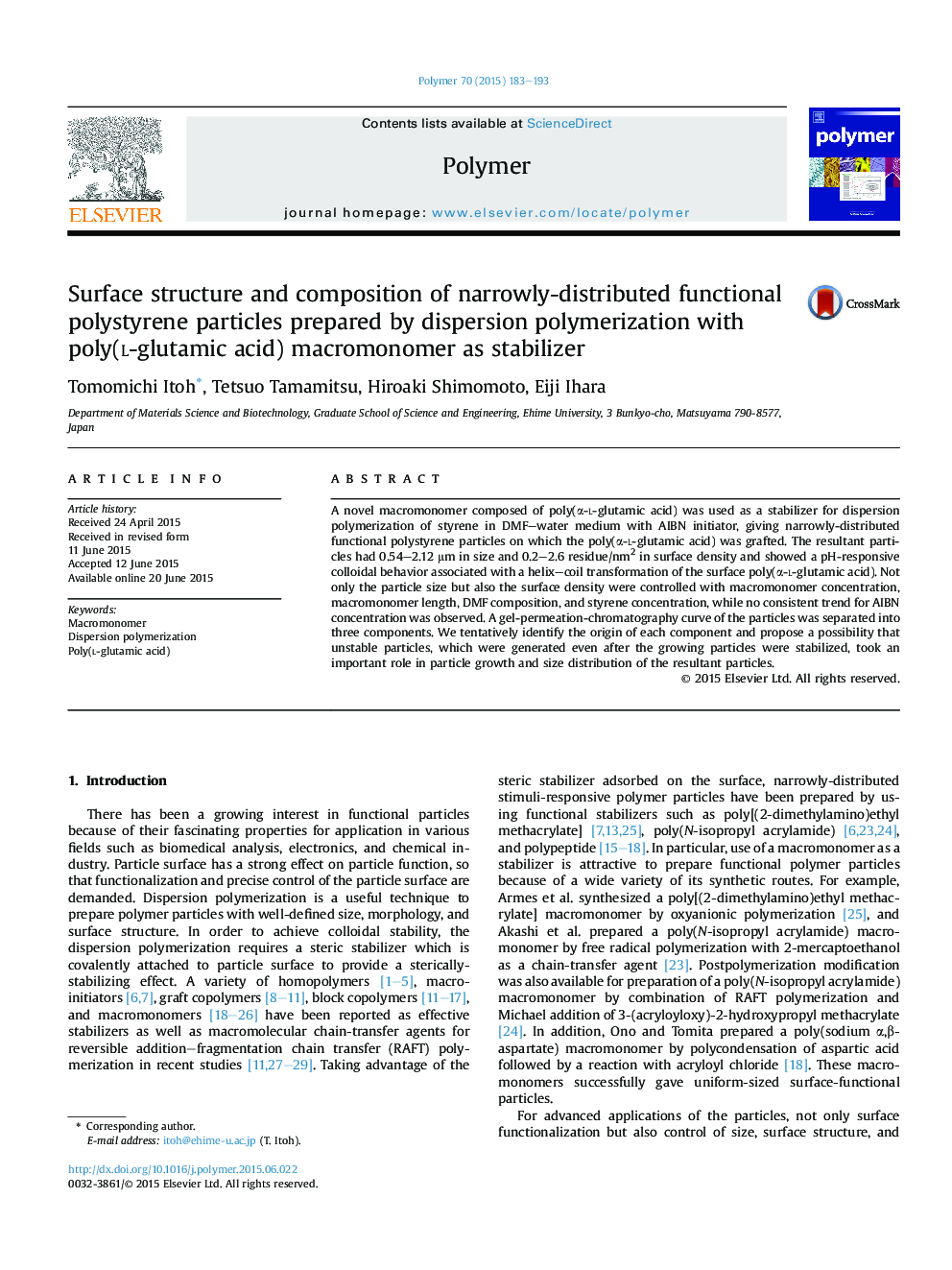| کد مقاله | کد نشریه | سال انتشار | مقاله انگلیسی | نسخه تمام متن |
|---|---|---|---|---|
| 5179943 | 1502536 | 2015 | 11 صفحه PDF | دانلود رایگان |
- Direct preparation of well-defined and surface-functional polystyrene particles.
- α-Helical poly(l-glutamic acid) macromonomer was effective as a steric stabilizer.
- Tunable surface density of the grafting poly(l-glutamic acid).
- Experimental validation of a theoretical model for surface control.
- Three modes of particle growth is proposed.
A novel macromonomer composed of poly(α-l-glutamic acid) was used as a stabilizer for dispersion polymerization of styrene in DMF-water medium with AIBN initiator, giving narrowly-distributed functional polystyrene particles on which the poly(α-l-glutamic acid) was grafted. The resultant particles had 0.54-2.12 μm in size and 0.2-2.6 residue/nm2 in surface density and showed a pH-responsive colloidal behavior associated with a helix-coil transformation of the surface poly(α-l-glutamic acid). Not only the particle size but also the surface density were controlled with macromonomer concentration, macromonomer length, DMF composition, and styrene concentration, while no consistent trend for AIBN concentration was observed. A gel-permeation-chromatography curve of the particles was separated into three components. We tentatively identify the origin of each component and propose a possibility that unstable particles, which were generated even after the growing particles were stabilized, took an important role in particle growth and size distribution of the resultant particles.
397
Journal: Polymer - Volume 70, 23 July 2015, Pages 183-193
